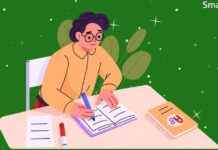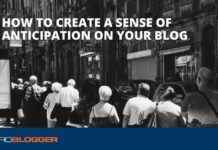They hang in museums and make it into books of poetry: works created by artificial intelligence. But how creative are such robots really?
Machines can paint pictures, compose music – and now also write meaningful texts. The reason for the latter is called ChatGPT: the popular chat robot that you can ask to write texts on all sorts of topics on the Internet. And they are not bad at all, at least at first glance they cannot be distinguished from a text written by human hands.
Some time ago, an artificial intelligence completed Ludwig van Beethoven’s 10th symphony. DALL-E – like ChatGPT developed by the US company OpenAI – is a computer program that creates visual art. And now literature by robots that can be produced by anyone with internet access? The latest advancement of ChatGPT can even combine text and image creation. A development that scares some people. How much does artificial intelligence threaten art?
Double-edged sword
Let’s ask. “Artificial intelligence (AI) can be both a threat and an opportunity for art, depending on how it is deployed.” The answer comes from the source – from ChatGPT itself.
Real experts deal with the topic in more depth. For example Konrad Zerr, Professor of Marketing as well as Market and Communication Research at Pforzheim University. “I think the potential is huge,” he says.
In one project, Zerr commissioned students to create AI artworks. For example, the participants asked ChatGPT to write a poem in the style of Heinrich Heine, which tells of people who get into a fight over mulled wine at a Christmas market.
Mixed results
The results were entertaining. The students themselves said in their evaluation: “It is doubtful at this point whether the deceased great poets can actually be recognized in our AI-generated poems.”
The texts are not outstanding in literary terms. For example, asking ChatGPT to write a Franz Kafka-style story about a cat will pop up a listless, suspiciously “The Metamorphosis” reminiscent synopsis about a cat named Kiki who one day “woke up and noticed something strange.”
But there are other examples. Photographer and “digital creator” Julian van Dieken used an AI to create the image “A Girl With Glowing Earrings”. It is based on the famous painting “The Girl with a Pearl Earring” by the Dutch painter Jan Vermeer – and is currently hanging in the Mauritshuis in The Hague.
This caused outrage among some visitors. Why did the renowned museum choose the artwork? “Quite simply: because we liked the picture,” says a spokesman.
Some time ago, an AI fed with algorithms by the Tunnel23 agency created a poem that took part in a competition organized by the Brentano Society – and made it into their anthology.
Art in danger?
So are we headed straight for a robot-infested art world? Oh well. “Art is always an interaction experience in which people deal with perspectives on reality.” That says the private lecturer Jessica Heesen from the University of Tübingen. Among other things, she deals with ethical and philosophical debates in the field of media and digitization.
An AI is always about pattern recognition and probability calculation, says Heesen. “But the person of the artist is missing, the aura of the original is missing and the provocation is also missing. Who should one complain to about a work of art?”
Whether robots could pose a threat to art “depends entirely on the concept of art that you use to look at AI,” she adds. “For simple decorative pictures that some people hang on the wall in the kitchen or in the living room, we will certainly see a lot of AI pictures in the future.”
AI conceivable as a little helper
Absolutely, both Zerr and Heesen see AI as a potential support for creating an artwork. “If there is also an artist who embeds, contextualizes and presents the work,” says Heesen. It’s a help, says Zerr. “And it also enables new forms of art.”
You can admire them, for example, in the Kunstmuseum Stuttgart. There, visitors to the exhibition “Shift – KIT and a Future Society” encounter not only a babbling Chinese sex doll or a revenant of the acting singer Marlene Dietrich as a deepfake, but also numerous faces of the US whistleblower Chelsea Manning.
US artist Heather Dewey-Hagborg’s 30 masks in “Probably Chelsea” are different, but they all come from Manning’s genetic sample. Dewey-Hagborg wants to show that the evaluation of genetic and personal data is not always clear.
“Shift” is intended to examine “the already existing entanglement of AI and the reality of life”. However, the installations and digital works are too complex and complicated. Rather, they show that it can be a long way for AI to go from science and technology to content and quality in art.
The look into the future
The linking of AI and art is still in its infancy. “There is a general consensus that AI systems do not come close to human creativity, at least not so far, one should add,” says Ulrike Groos, director of the Kunstmuseum Stuttgart. But the potential is there.
For the future, Professor Zerr describes it like this: “The creative industry will have to change fundamentally in terms of processes and skills. These tools will sooner or later become standard.”















